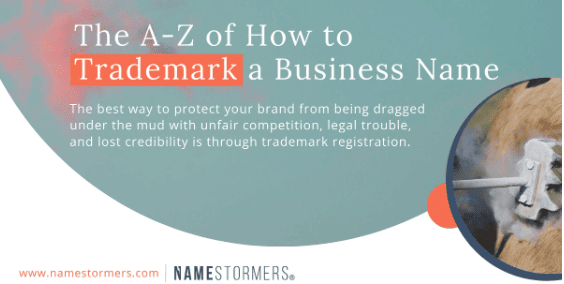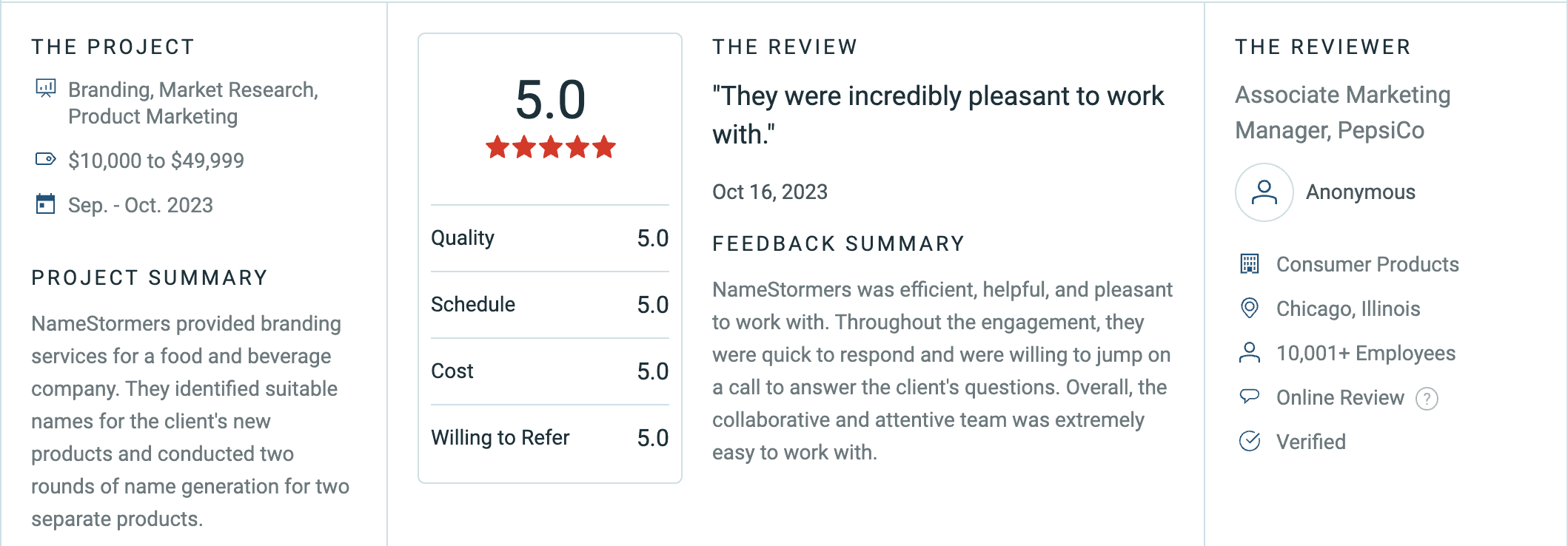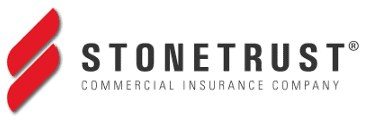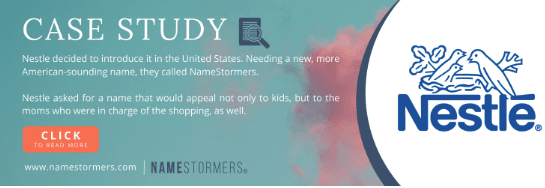Congratulations on coming up with a perfect name for your business! It’s the first step towards profitability and growth.
While this might seem like all you need to do to move forward, there’s more to successfully owning and running a business under your new name.
You need to trademark your registered business name, assuming you are using it as a brand name, to make it uniquely yours and secure the greatest legal protection available.
Having a registered trademark for your business means that only you can use and benefit from your business name for the products you sell and the services you provide.
That is, a trademark registration gives you intellectual property rights in your name and safeguards it, protecting you from fraud or competitors who want to reap the benefits of all your brand building without your consent.
What Trademark Registration Can Do for Your Business: A Case Study
Simply registering your business name with the secretary of state’s office isn’t enough if you’re also going to use it as your brand name.
Federal trademark registration is the best way to protect your brand from being subject to unfair competition, legal trouble, and lost credibility.
When Amicus Mutual Insurance Company approached us, they needed a name change—quick. A competitor was threatening legal action for trademark infringement, plus Amicus wanted to revamp its company image and win back customers.
We helped them come up with a new business name, StoneTrust Commercial Insurance Company, and start the trademark registration process so that:
- They secured ownership of their brand name to prevent others from infringing on its uniqueness or profiting off of its popularity.
- Their customers could distinguish them from competitors, hence creating and maintaining brand loyalty.
- They were protected by trademark laws against legal action for infringement and unfair competition lawsuits.
- They could prove ownership and confidently invest in brand-building, increasing their value with potential investors.
Finding the right business name and trademarking it has helped StoneTrust grow and prosper. If you want to set up your business for success, finding the right name and registering it as a trademark should be a priority.
Step by Step Guide for Trademark Application
To trademark a name, you have to file a trademark application with the United States Patent and Trademark Office (USPTO). The main steps to follow on how to trademark a name are:
- Conducting a search on the USPTO website & beyond
- Preparing your application for applying for your registered trademark
- Filing for your trademark registration
Step 1: Search on the Trademark Electronic Search System (TESS)
The first step in the trademark application process is searching for your business name on the USPTO electronic records. The system is called the Trademark Electronic Search System (TESS).
Running a trademark search on the USPTO website is free. You only need to open the site and follow the steps provided.
The system allows you to check for your name and other similar names with a federal trademark in the same category as your business.
Check if your desired business name already has an existing trademark to save yourself from unnecessary trademark legal battles.
Too complicated or too limited? NameStormers can help you search for your name using the same tools and methods trademark attorneys use. This much more thorough search involves looking for potential issues by state, not just at the federal level. It also involves looking for sound-alikes in a much more thorough manner than what you can do on the USPTO web site. Finally, NameStormers can help you search for issues in other countries you may be targeting.
We can even suggest low-risk names to you as alternatives to your preferred name if it turns out to be unavailable. Names that are much more likely to be able to be trademarked. We have helped other companies with their name search. Check out our portfolio.
We can save you time and money from legal troubles due to potential trademark infringement. We can help you trademark a name that is distinct and that will allow you to stand out.

Step 2: Preparing Your Application To Apply for Protection of Your Intellectual Property
Once you’ve completed the trademark search stage, you can now apply for your company’s registered trademark to protect it from intellectual property theft.
This video explains the application process as required by the patent and trademark office.
While filing your application, you will be required to show the basis of your application.
If you’re already using your name, select the “commercial use” option. If you’ve yet to use the name but are definitely planning on using it in the near future, click on the “intent to use” option.
If you choose the commercial use option, you must provide a specimen of how you’re actually using your name or brand in commerce (what your business title or name looks like on your website or packaging). It could be a logo, a name or an image that is unique to your business identity.
Here are the personal details you’ll need to fill out as part of the trademark application process:
- Name and address of the business owner
- Your citizenship and legal entity
- A name and address for future correspondence (different from your name and address)
- A sketch of the proposed mark (if filing for a design mark, a logo, in addition to your wordmark or the name itself)
- A detailed description of the mark
- A list of the goods or services traded under your business brand name
- The class of goods or services you render
- A clear example of your name or logo and proof of when it was first used
- Finally, how you want to pay for the required filing fee for the type and number of classes you included in the application
Step 3: File Using the Trademark Electronic Application System
After collecting all of the needed information, you can apply for trademark protection for your business using either of these Trademark Electronic Application System (TEAS) filing options:
- TEAS Plus
- TEAS Standard
The TEAS Plus application form is more streamlined than the Standard version and has lower chances of being rejected, but must be submitted by a U.S. licensed attorney.
Filing fees will depend on the filing option you choose. TEAS Plus costs less than TEAS Standard but, again, you will need to have an attorney do it for you..
You may also need to pay additional fees, such as the filing fee for additional trademark classes.
However, if you’re looking for something more custom-made for your business that you can do yourself, the TEAS Standard form is the better option.
Note: Once filed, you can check the status of your application on the Trademark Status & Document Retrieval portal.
What Happens After The Application Process?
After completing the application process, your application is placed in the queue for review by a USPTO examiner.
It may take several months from the time you file for you application to actually be reviewed.
The USPTO examiner scans your application, looking for faults or irregularities. If he or she finds any, you’re notified through a letter called an “office action.”
You typically have six months to respond to an office action or your application is revoked. You can make an extension request before the deadline lapses if you still need more time to respond to the letter.
If your application goes through, it’s published in the USPTO Trademark Official Gazette.
Other people can contest your trademark application during the publication period (and for even years after you actually receive your registration). If this happens, you will need to engage a law firm to handle the trademark infringement action, justify yourself as the trademark owner, and hopefully avoid litigation.
Maintaining Your Trademark
You’ll also have to think about maintaining your trademark. It can last indefinitely, but you’ll need to renew it every 10 years. In addition, you’ll be required to file maintenance documents to prove that you’re still using the registered mark before you can renew your trademark registration.
Most importantly, the USPTO only registers your trademark. It neither scouts for infringement nor offers legal advice.
It’s your job to stop a business entity from using an identical or similar mark and taking legal steps to enforce trademark law.
Can the Trademark Office Reject My Application?
Yes, the USPTO can reject your trademark for the following reasons:
You Didn’t Register the Trademark for Business Purposes
If you apply for a registered trademark for personal reasons, the USPTO will reject your application.
It’s Generic or Descriptive
If you want to trademark your business name as a brand, ensure your company’s name is unique and that you’ve used it in interstate commerce.
The USPTO automatically rejects trademarks that are common words, sound too generic or are too descriptive.
Make sure your name is as unique and differentiating as possible. For example, we helped SMARTBIM Technologies change their name to Bantam Tools. We focused on two primary characteristics of the company’s offering, small size and agility, and developed a name that’s easy to remember while being low risk when it comes to trademarking.
Imagine if we’d named the company something like: “Easy Tools.” Chances are the USPTO would never have accepted it. The more you think outside of the box, the higher the likelihood that you’ll create a name that’s original and differentiating, at least for your line of business.
The Name Is Confusing to Consumers
If your company’s trademark is the same name as another company’s existing trademark for the same class of goods and services, it will likely get rejected.
The USPTO can’t allow two businesses in the same industry to use an identical (or even a very similar) brand name because of the likelihood of confusion.
The USPTO might also reject your application if you want to use unclear or misleading suggestive marks that might also confuse customers.
After Registration
Your company’s mark is registered if it was approved for commercial use. This means that you can continue to use the mark nationwide as your brand identity (and you should replace the “™” symbol with the ® to telegraph to the world it is now your registered trademark).
Or if your mark is approved because you said you are intending to use it (i.e., intent to use), you’ll get a Notice of Allowance. This document means that the trademark name has been approved, but you’ll need to file additional paperwork showing the USPTO that you’ve actually started using it before proceeding.
The mark can only be registered formally after you start using it in business. You will fill out a Statement of Use and provide evidence of it being used to the USPTO.
Trademarks and Common Law Trademark Ownership
You might be thinking, “Do I really need a trademark for my business?”
If you’re just starting, a trademark might not be on the list of your priorities.
When you start using your business name, if you don’t bother to register it, you operate under common law trademark ownership. However, common law rights aren’t usually adequate if you are planning on growing your business or nonprofit organization.
Under common law trademark ownership, you are offered limited trademark rights and your name is typically protected only within the geographic area where you operate.
If you register your name with the USPTO, your name gets broader and stronger legal protection.
So, if someone uses your name for unauthorized gain, while you have some protection of your common law trademark, you’ll have more rights and a better legal case if you’ve registered your trademark.
If you registered your trademark with the USPTO, and someone uses it unlawfully, you can sue them for infringement and feel more confident that you will prevail.
Common-Law Ownership
- Should only be considered for a small business operating only in a local area.
- Limited protection in lawsuits.
- Infringement cases cannot be presented in federal courts.
- Still need to make sure you are not infringing on someone else’s registered trademark.
Federal Trademark
- You can safely operate across state borders.
- Full protection in lawsuits.
- Infringement case can be litigated in a federal court.

Frequently Asked Questions
What is the Difference Between a Trade Name, Trademark, and Service Mark?
Trade Name
- The name under which a company chooses to do business.
- Provides minimal protection.
- Commonly referred to as “doing business as” DBA, assumed name, or fictitious name.
- Not used as a brand name but rather just your business name. You might sell products or services under other brand names (e.g., your trade name is “ABC Holding Company” but then you have brand names which you’ve registered as trademarks like “ABC Fresh Roasted Coffee Shop” or “ABC Miracle Shampoo”.
Trademark
- A word, name, design, logo, or slogan that distinguishes your goods and products from others.
- Offers more protection.
- May use the ™ symbol until registered, then can switch to ®.
- Many trade names ultimately are used as brand names, so it is often advisable to seek trademark protection sooner rather than later.
Servicemark
- A word, name, design, logo, or slogan that differentiates your services from competitors.
- Offers more protection.
- May use the “SM” symbol until registered, then can switch to ®.
Note that the TM and SM symbols signify that you are using the name as a trademark prior to receiving a trademark registration, but don’t signify that you have the same legal protection as legally registered trademarks, hence the need to go through the entire process with the USPTO.
Do I Need a Trademark if My Business Name is Registered With the State?
Yes, you do, it you engage in any interstate commerce (across state boundaries).
Once you register your business name with the state as a limited liability company, traditional corporation, or any other business entity, you may gain common law trademark protection.
As mentioned previously, common law trademarks prevent other businesses from using your name but often only in your immediate geographic area. They also doesn’t necessarily provide you with any trademark rights if someone else has already registered your name as a federal trademark, even if they are not yet using it in your state or geographic area.
If your business operates in several states or other countries, you’ll need to register a trademark ideally with the United States Patent and Trademark Office (USPTO) for exclusive rights to the name in the US for your line of goods and services. You’ll also need to do the same with the USPTO equivalent in other countries that you will be operating.
This process gives you protection in case you need to sue for infringement. The enhanced protection is recommended for businesses that operate across the country and would prefer to have the backing of a federal agency like the USPTO.
Do I Need a Trademark Attorney When Registering?
While not an absolute requirement, we strongly recommend using an Intellectual Property (an IP attorney or a trademark) attorney.
If you and your company’s permanent residence is in the US, you may be able to register your trademark on your own, but given the complexities of trademark law in today’s internet and digital age, we still think it is worth the extra money to engage an experienced trademark attorney.
Let NameStormers Help You Trademark Your Business Name
At NameStormers, we’re an award-winning company naming agency that’s helped companies like yours come up with game-changing names to build unshakable brands for over 30 years.
Here are some of the more awards we’ve bagged for doing what we love:
Some of our specific successes are recapped in our public portfolio.
We come up with everything from high-tech names to high-touch names and even the occasional lovable name, and we do the preliminary trademark screenings for you, helping you find that distinctive, memorable name to give you a better shot at growth and success.
We are committed to do what it takes with our seven-step name development process where we:
- Gather information about your company, target audience, and competitors, and what your name needs to do for you
- Create memorable and catchy business names options for you
- Conduct preliminary trademark, common law, and internet usage checks of every name to help ensure they’re unique and viable
- Pitch multiple rounds of names to you for your consideration
- Use your feedback and also conduct a customer validation study to help us tweak the names to make sure they resonate internally and externally with your customers
- Test the names with a bigger sample of your target audience to check for memorability and likelihood of confusion with competitors
- Present strong name options together with all of our legal research and our name testing research to help you choose the one that is best for you
Our reviews prove customers like our creative, transparent, and cooperative naming process:

Ready to develop a novel, engaging and memorable business name and brand name that will pass the trademark registration test and related hurdles, and help you grow and prosper for years to come?
Contact us and let’s name something.







